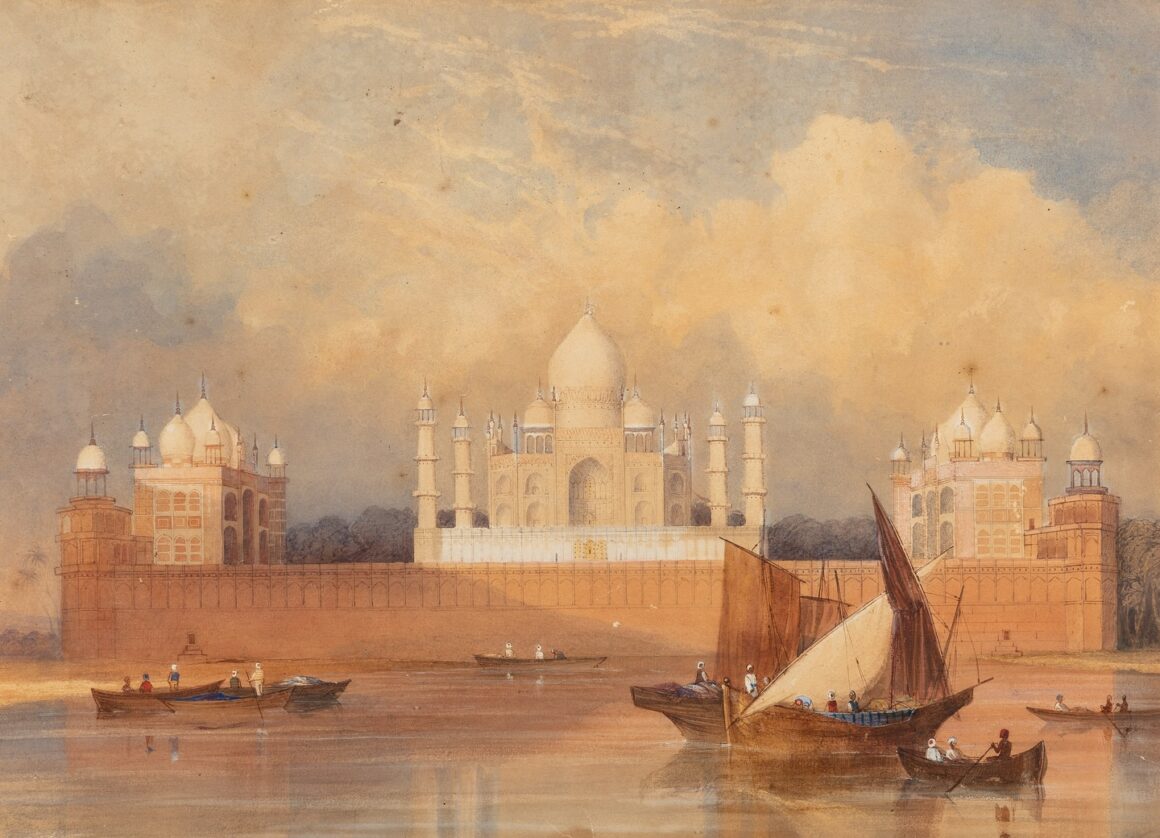This artwork is a classic-style painting of the Taj Mahal, likely inspired by 18th–19th century European watercolor traditions. Here’s a detailed description:

Overall Composition
The painting captures the Taj Mahal from across the Yamuna River, presenting a serene and romanticized view of the monument. The perspective is wide, showing not only the Taj but also the river life in the foreground.
The Taj Mahal stands majestically at the center with its iconic white marble dome, four minarets, and intricate Mughal architecture.
The two red sandstone buildings—the mosque and the jawab—flank the Taj symmetrically, painted in warm earthy tones.
The red fortification wall along the riverbank adds depth and contrast to the composition.
Sky & Atmosphere
The sky is rendered in soft hues of gold, peach, and light blue, suggesting either dawn or dusk.
The clouds are gently textured, contributing to a dreamy, ethereal ambiance.
River & Boats
The Yamuna River in the foreground reflects the warm tones of the buildings and sky.
Several boats with sails and rowboats carry figures dressed in period attire, giving the artwork a sense of daily life and movement.
The reflections in the water are subtly painted, enhancing the realism.
Art Style
Likely a watercolor or gouache painting.
The artist uses soft washes, delicate detailing, and subdued tones typical of British colonial-era landscapes.
The overall mood is calm, nostalgic, and picturesque—highlighting the Taj Mahal’s beauty through a gentle, romantic lens.
Impression
The artwork celebrates the timeless elegance of the Taj Mahal, blending architecture and natural elements to evoke both grandeur and tranquility. It feels like a moment frozen in golden light, emphasizing the monument’s emotional and historical significance.

